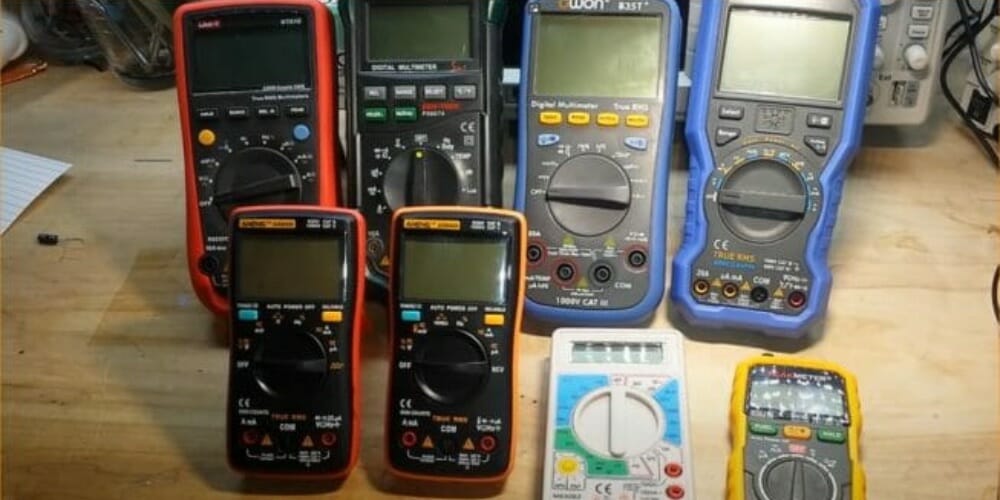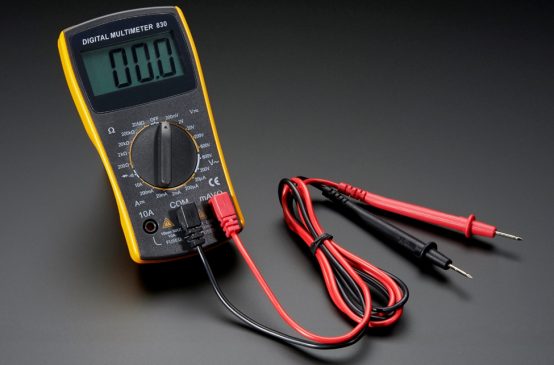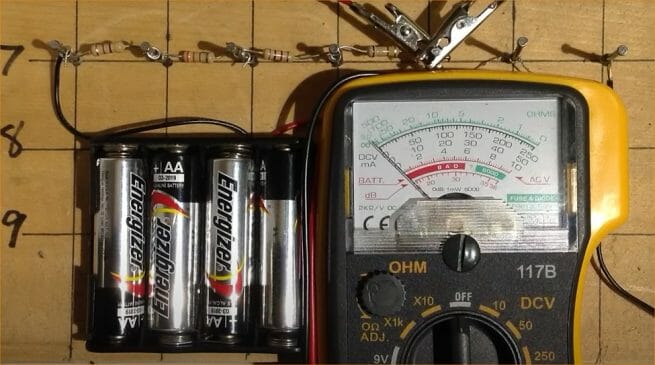Multimeter vs Ohmmeter: Which is Right for You?

Electric units play a significant role in our daily lives, and many of us do not realize it. However, if you are someone who spends their time working on electronics, then knowing the units involved and how to use them is critical. One of the units that get measured quite often in electronic devices is resistance and that is what an ohmmeter is used for. However, you could also be working on a complex project where measuring more than just resistance would be necessary.
Other units that get measured just as frequently include voltage, direct/alternating current, temperature, and continuity. Such a situation would call for a meter with multiple detection capabilities or a “multimeter”. Unfortunately, many people do not understand the difference between the two, even though they work with them. This guide will help clear things up for you, so keep reading.
An ohmmeter is a specialized tool built only for measuring the resistance present between two electrical nodes. A multimeter is a much more capable device that does the job of an ohmmeter and helps measure AC/DC voltage, temperature, direct/alternating current, and more.
Types of Multimeters

A multimeter is a device that offers a wide range of options as a standard. This makes it easy for users to choose when buying one as they only need to choose the meter that covers their needs. Most meters come with a few basic units of measurement, but there are some advanced options that also offer less commonly offered measurements. In essence, the only two types of multimeters are analog multimeters and digital multimeters. (1)
Analog Multimeter
Considered to be the cheaper of the two options, an analog multimeter comes with a needle point (analog meter) over a printed scale of measurements. This is typically not used anymore as they can be a hassle to use and can be a bit inaccurate. The only use scenario where they shine is when you want to measure small changes in measurements as the needle movement can pick up even the slightest changes. Analog multimeters are also cheap and at their core is a microammeter. Here’s a learning for beginners on how to read an analog multimeter.
Digital Multimeter
Called DMMs or digital multimeters, this is a device that all professional electricians and technicians carry with them. Being as they are digital meters this means that you can get them with an LCD instead of a needle. These provide accurate measurements and come in several different options of measurements. (2)
Cen-Tech and Astroai are two of the leading brand for digital multimeters in the market today. You may check its full review to know which one is best for you.
Types of Ohmmeters

There are three main types of ohmmeters which include series type ohm meter, multi-range ohm meter, and shunt type ohm meter. They are all used to measure resistance and here is how each of them works.
Series Type Ohmmeter
For this ohmmeter, the component you want to measure the resistance should be connected with the meter in series. The device works by flowing current through the circuit and the resistance added by the component brings the measurement down from in flinty to zero. Infinity represents free flow and the closer the value is to zero, the more the resistance is present in the circuit.
Shunt Type Ohmmeter
This type of ohmmeter requires the component to be attached to the battery in parallel and resistance is displayed by a movement of the needle to the left side. The meter is quite basic and does not provide current or infinity spot measurements either.
Multi-range Type Ohmmeter
This is a high range ohmmeter that also features an adjuster which helps change the range according to your needs. The measuring component gets attached in parallel to the meter in this one and the needle pointer can show the resistance magnitude being used.
Differences Between Multimeter and Ohmmeter
The following table provides some key differences that you can find between an ohmmeter and a multimeter.
| Multimeter | Ohmmeter |
| A multimeter can do the same job as an ohmmeter and measure other units like frequency, temperature, voltage capacitance, etc. | The only unit measured with an ohmmeter is resistance and continuity. |
| Multimeters are generally pricier and depending on functionality, they can become quite expensive. | Ohmmeters are much cheaper due to their limited functionality. |
| Multimeters are much more accurate due to their circuitry and the fact that they can provide digital measurements. | The accuracy of an ohmmeter is not that good, especially due to analog design. |
Multimeter vs Ohmmeter: Which One Wins?
It is clear that from a functional perspective, a multimeter is much more capable than an ohmmeter. However, if resistance and continuity are all you care about and measuring and accuracy is not an issue, then an ohmmeter might be a better option for you. However, for the ultimate functional experience, you should opt for a multimeter with digital meters.
References
(1) basic units of measurement – https://www.britannica.com/video/
214818/What-are-SI-units-overview-International-System-of-Units
(2) LCD – https://electronics.howstuffworks.com/lcd.htm
